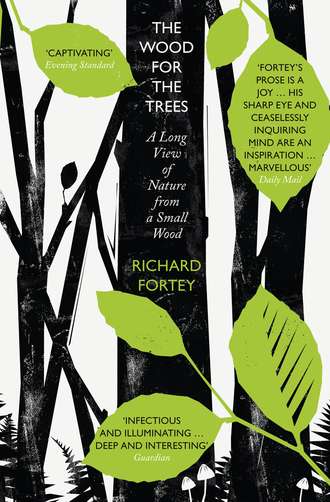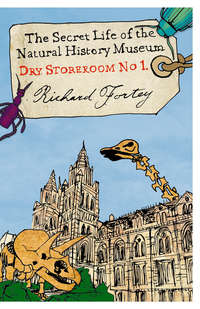
Полная версия
The Wood for the Trees: The Long View of Nature from a Small Wood
The root of the ghost puzzle really is the root. All our ghostly plants, whether orchid or pipe, have similar-looking roots, which are tuberous and puffy. Both the loss of chlorophyll and the ability to thrive under the beech canopy are the result of special adaptations secretly hidden away underground. V.S. Summerhayes was right in essence: neither the Dutchman’s pipe nor the ghost orchid manufactures its own nutrients. But he was wrong to assume that these plants were what he termed ‘saprophytes’ – that they sourced all they needed from the rotting leaf litter surrounding them. The explanation is both more complicated and much more wonderful than mere scavenging. Monotropa and Epipogium are playing parasitic piggyback on mushrooms. In the case of the Dutchman’s pipe the fungus has been identified with an ordinary-looking mushroom that has been called the girdled knight (Tricholoma cingulatum)8 – not exactly a regular ‘shop mushroom’, since it has a greyish cap and white gills, but constructed along the same familiar lines. Our pallid plant has given up any attempt to manufacture its own necessities in favour of stealing all it wants from its fungus host. Above ground, it needs to be nothing more than flowers and seeds. Like some Regency dandy feeding off colonial slavery, the organism can be all show and no hard graft. The distinctive roots of the plant reveal the truth: they are full of fungus, and modern techniques of DNA analysis allow the molecular biologist to identify exactly which species from a choice of thousands. When I started out in science as a botanising youth this would have been impossible, but now it is almost routine procedure back in the laboratory.
However, this is not the end of the story. For the fungus itself lives in an intimate association with beech trees in deep woodland. The ‘roots’ of the fungus are masses of threads called mycelium. These threads move through the moist soil seeking out nutrients, and they are skilled in reprocessing all that mush and drift of rotting leaves. Mycelium is the workhorse of the fungus, while the familiar mushroom fruit body is just the culmination of the life cycle for spreading the minute spores of the species. Like many other fungi, Tricholoma forms a partnership with the roots of beeches, where it can live for many years. The threads of mycelium fully coat the growing tips of the roots rather as tight-fitting kid gloves enclose the fingers, and the fungal talent for acquiring important foodstuffs such as phosphates from the surrounding environment becomes essential for the healthy growth of the tree. The fungus-coated rootlets seek out valuable molecules. The fungal dressing is called mycorrhiza, which is simply a classical way of saying ‘fungus root’. Mycorrhiza makes for a reciprocal partnership, because the tree in its turn does what it does best – manufacturing sugars and other products of photosynthesis – and supplies them to the growing fungus, which cannot make them for itself. It is a symbiosis, an intimate growing-together. Like a well-honed comedy duo, each partner would fall flat without the other.
So the Dutchman’s pipe is at the foppish apex of a ménage à trois. The beech works with sunshine and rainfall, and supplies the fungal partner on its roots with the means to quest for more exotic vital nourishment. Monotropa is a parasite on the fungus, so indirectly it too benefits from the photosynthetic work of the lofty beeches, and can dispense with its own green parts. The fungus supplies everything else. Freed from the need for light, the parasite can safely flower in deeply shady glades where nothing else can prosper.9 Nor does it have to flower every year. In a bad year for either tree or fungus it can hang on as a root or rhizome hidden beneath the litter, biding its time. Now we can understand the fickleness of those ghostly appearances. The spooks might really be there all the time.
Конец ознакомительного фрагмента.
Текст предоставлен ООО «ЛитРес».
Прочитайте эту книгу целиком, купив полную легальную версию на ЛитРес.
Безопасно оплатить книгу можно банковской картой Visa, MasterCard, Maestro, со счета мобильного телефона, с платежного терминала, в салоне МТС или Связной, через PayPal, WebMoney, Яндекс.Деньги, QIWI Кошелек, бонусными картами или другим удобным Вам способом.





